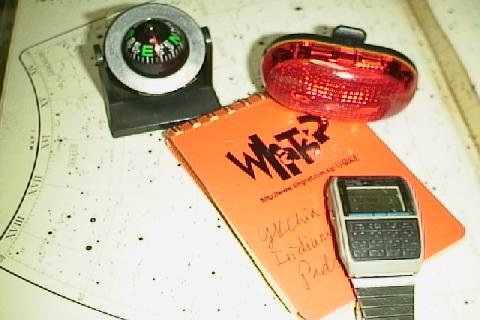Here you will find the sequence of events for
a visual flare observation.
Step 1 - Check whether there are bright flares visible
from your location or decide how far you need to travel to see one.
-
You can use GSOC excellent prediction service, enter your
longitude and latitude. Longitude & latitude for local Singapore
towns can be found here. If you need other locations please let me know.. Just 'cut
and paste' your town, long,lat into GSOC prompt one at a time. Do make sure you paste the correct entries ( long. for long. etc). Book mark GOSC so that you do not have to do it again the next time round.
-
DIY Flares Prediction - First download iridium TLE( two lines
satellite orbital elements) from links such as in Visual Satellite Observer's Home Page or just cut and
paste from GOSC under orbit. I use Bob Matson's excellent program iridflare163 (DOS) to crunch for 7 days prediction in advance. Iridflare outputs RAs,DECs and there is a verbose option to get maximum of three listings per satellite. This is helpful when you want to use stars as background to frame your camera with longer focal lens ( >100mm). You can either plot this manually on a Star Atlas eg Norton Star Atlas or Sky Atlas 2000.0 or you can get also Bob Matson's SKYMAP6 to do the job for actual vs predicted trajetories analysis. Find a screen capture program that can captured map in bmp format.
Step 2 - Good Flares Candidates for City Dweller.
-
Bright - 4 magnitude or brighter . Bright enough to
shine through thin clouds and not affected by even with full moon nearby.
-
High elevation angle >25 ( to keep out the horizontal haze/smog)
-
Dark enough twilight. ( later than 7 pm and not later than
6:15am )
-
Do not be discourage by overall cloudy sky, you just need
a clear patch where the flare will occur
Step 3 - Synchronize your digital watch, I
call 1711 and adjust watch to seconds accuracy.
Step 4 - Bring a compass for determining azimuth. (
0/360 is North, East is 90, South is 180 and West is 270). Estimate
the angle of elevation. (Zenith or directly overhead is 90, horizon
is 0, half way is 45 degree. Half the 45 give 22. Knowing this provide
90,67,45,22. Also a fist at outstretched arm subtend 5 degree.)
Step 5 - Find an unobstructive site for the flare. Be
there 10-15 minutes early. Check your bearings and wait for flare appearance.
Step 6 - Record your observation for future reference.


